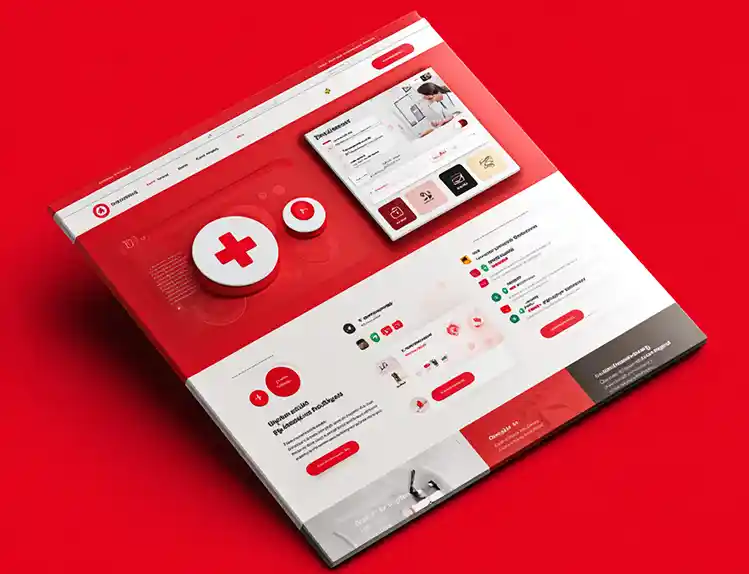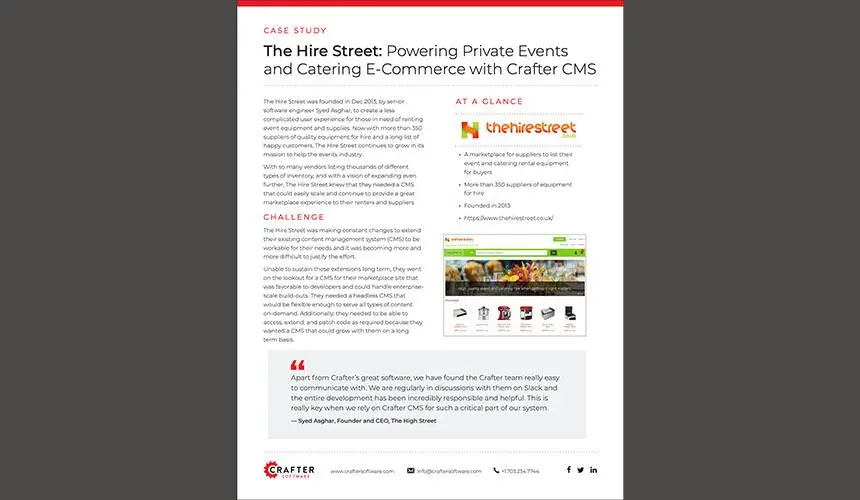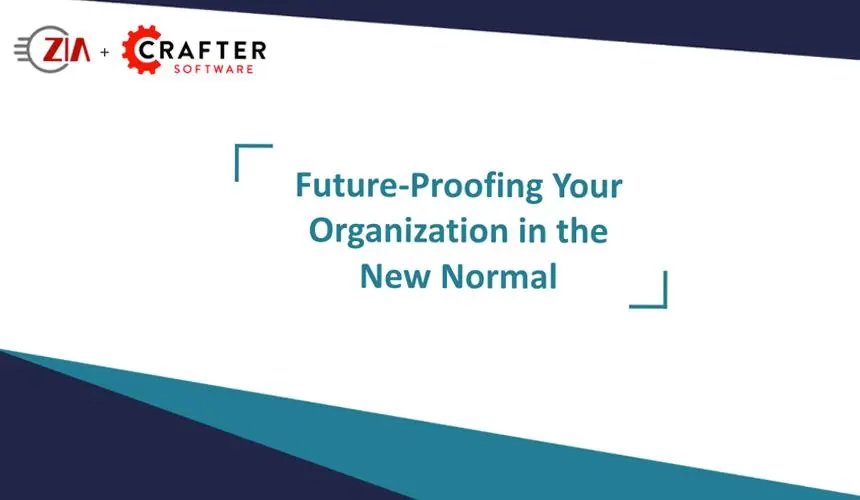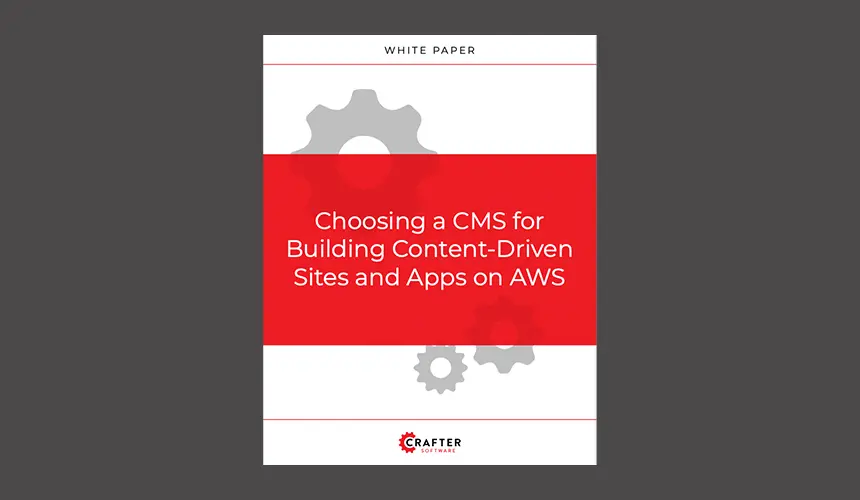How DevContentOps Streamlines Enterprise Software Development

Amanda Jones

Enterprise software development is becoming increasingly complex as companies try to leverage more data and content than ever before to deliver exceptional digital experiences. This is putting an enormous burden on IT teams to develop enterprise-grade software, and in many cases, marketers are left in the dark. Most applications are content-driven, yet many businesses keep content management systems separate from software development and deployment tools.
Without active involvement from marketing teams, enterprises fail to put the proper processes in place to efficiently deliver software that meets customer demands. DevOps-first projects are becoming the norm — with 85% of organizations have either adopted or are planning to adopt DevOps in 2019 — but they are not sufficient for the growing number of content-enabled enterprise software applications. Modern enterprise software development requires a number of features like Agile processes, API-first headless CMS, Git-based content storage, microservices, CI/CD tool integration, and many other innovative technologies. These are some of the core tenants of the DevContentOps process.
With this in mind, we’ll look at the necessity for content-driven enterprise software, why DevOps alone doesn’t meet all the needs of enterprise software development, and how DevContentOps can.
Modern Apps Are Content-Driven
Every enterprise application has content, even if it’s only strings are images. Content fuels websites, e-commerce experiences, microsites, AR/VR, landing pages, mobile apps, IoT devices, and virtually every other digital medium. Without marketing teams continually publishing new content, digital experiences become stale and outdated. That’s why the majority of software today is driven by content.
Often times, however, this content is baked into the code by developers. This poses a problem for marketers that want complete control over the customer experience. That’s because a critical aspect of content marketing and delivering digital experiences is timely and relevant content. If the content is baked into code, marketers have little control over when their content reaches end-users. They will need to wait for developers to make code changes, and it's often not a top priority for development teams to update content.
Many enterprises, therefore, opt for CMS-driven applications, but the efficiency varies by the system that organizations choose. With a CMS, marketers have control over the content and the customer experience, especially if the CMS has rich and extensive content authoring capabilities. Using CMSs, however, developers face challenges in implementing effective DevOps practices. That’s why many development teams don’t want to work with a CMS when building enterprise software applications.
Another common solution enterprise software development teams choose, therefore, is using external databases for specific applications in lieu of a CMS. That’s because developers can’t easily integrate most CMSs with their DevOps processes. Instead, developers can design the database to closely match the requirements of the software they’re building, but this still leaves marketing teams with little control over the content presented within the application.
In each of these situations, content is crucial for delivering digital experiences, yet there’s little collaboration between marketing and IT teams. For effective content-driven software applications, IT teams need efficient DevOps processes and CI/CD tools in place, while marketers need control over the content. This is a significant hurdle for enterprises that don’t integrate content into their DevOps approach.
DevOps Doesn’t Address Content Operations
Most of the problems with developing and delivering modern content-driven applications comes down to the separate tools and processes for content management on one hand, and those for software development, deployment and operations on the other hand. Many organizations have successfully leveraged both DevOps and ContentOps, but the tools and processes are entirely separate from each other. The result is that marketers and developers don’t collaborate enough when building and managing enterprise content-driven software applications.
Read more: DevOps vs GitOps vs ContentOps: Why DevContentOps Is The Future
Without bringing content management into the DevOps process, siloes form within the organization. This is further exacerbated with traditional CMS solutions, which can’t easily integrate with modern development technologies and processes. Developers have recognized the limits of traditional CMSs, and have turned to headless solutions. But headless CMSs place limitations on marketers for controlling the presentation of the content they create. Marketers are forced to create content in isolation using form-based tooling without any context of the application and end user experience. While frontend developers can access the content from headless CMSs via APIs, there are still barriers to collaboration between marketers and developers when building and managing content-driven software.
In addition, with most CMS solutions the content and code becomes siloed within separate environments. Every enterprise development team needs multiple environments for development, testing, staging, production, and sometimes more. Keeping the content and code in sync across these environments is a huge burden with traditional database-driven CMS solutions. In most cases, a database administrator will need to perform a manual dump and load process to bring content across environments. The result is content freezes and downtimes occur throughout software release processes, which in turn slows down release cycles and the frequency of such. Innovation suffers.
CrafterCMS Enables Efficient Enterprise Software Development
The CMS that an enterprise chooses is crucial for efficiently developing content-driven software applications. A Git-based, API-first headless CMS like Crafter is ideal for enabling a comprehensive DevContentOps approach to software development. DevContentOps — bringing code, content, and configuration together — is the key to efficient enterprise software development.
First of all, CrafterCMS is an API-first headless platform, so frontend developers can easily integrate with a variety of front-end frameworks. Second, its Git-based content repository means content can easily be replicated into lower environments with a simple “git pull” command. Similarly code can be pushed forward to higher environments. There are no content siloes like many traditional CMSs. Code, content, and configuration can all be integrated into the CI/CD pipeline. This means software release cycles are faster, content publishing is uninterrupted, and innovation accelerates.
CrafterCMS and its unique support for the DevContentOps process brings together the marketing and IT departments seamlessly. Content-driven applications can be built with the benefit of true collaboration across the organization.
To learn more about DevContentOps, download our White Paper What is DevContentOps? today.
Related Posts

Composable DXP vs Traditional DXP: Why Enterprises Choose CrafterCMS

Amanda Jones

TYPO3 Alternatives: Why Enterprises Choose CrafterCMS

Amanda Jones

Successful Localization Strategies with CrafterCMS

Sara Williams

What Kind of CMS Is CrafterCMS? Headless—Plus Everything You Need to Ship Faster

Amanda Jones
Related Resources
-

Introducing CrafterCMS v4.0
Webcast
-

How to Easily Migrate from Drupal to CrafterCMS
Webcast
-

The Hire Street: Powering Private Events and Catering E-Commerce with CrafterCMS
Case Study
-

Future-Proofing Your Organization in the New Normal
Webcast
-

Choosing a CMS for Building Content-Driven Sites and Apps on AWS
White Paper





